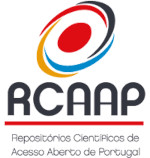Pós-tratamento de efluentes provenientes de reatores anaeróbios tratando esgotos sanitários por coagulantes naturais e não-naturais.
Palavras-chave:
Pós-tratamento. Físico-químico. Moringa oleifera. Coagulante natural. Coagulante não-natural.Resumo
O presente trabalho tem como objetivo estudar pós-tratamentos de efluentes provenientes de reatores anaeróbios de manta de lodo pelo uso de coagulantes naturais (Moringa oleifera, Lam) e não-naturais. Para tanto, foram realizados vários ensaios de jar-test utilizando tanto esgoto sanitário bruto, quanto efluente de um reator UASB (Upflow Anaerobic Sludge Blanket) em escala de laboratório. Foram testadas várias dosagens dos coagulantes natural (Moringa oleifera) e não-natural (cloreto férrico) utilizando esgotos brutos domésticos. Em seguida, foram estudados os efeitos dos coagulantes associados ao auxiliar de coagulação (FO 4140), nos parâmetros físico-químicos e microbiológicos do efluente do reator UASB. A partir dos resultados, verificou-se que o coagulante natural moringa forneceu baixas remoções de turbidez na comparação com o coagulante não-natural cloreto férrico, tanto para o esgoto bruto, como para o efluente do reator UASB, questionando-se a real aplicação da moringa no tratamento físico-químico de esgoto sanitário. Adicionalmente, verificou-se um efeito negativo do uso das sementes de moringa, mediante a detecção de um aumento considerável nas concentrações finais de DQO e turbidez, quando o efluente anaeróbio era testado. Os resultados mostraram que, de uma forma geral, a semente de moringa se mostrou ineficiente na remoção de contaminantes físico-químicos e microbiológicos presentes em esgotos sanitários brutos e efluentes anaeróbios.Downloads
Não há dados estatísticos.
Downloads
Como Citar
da Silva, M. E. R., de Aquino, M. D., & dos Santos, A. B. (2009). Pós-tratamento de efluentes provenientes de reatores anaeróbios tratando esgotos sanitários por coagulantes naturais e não-naturais. Revista Tecnologia, 28(2). Recuperado de https://ojs.unifor.br/tec/article/view/55
Edição
Seção
Artigos













